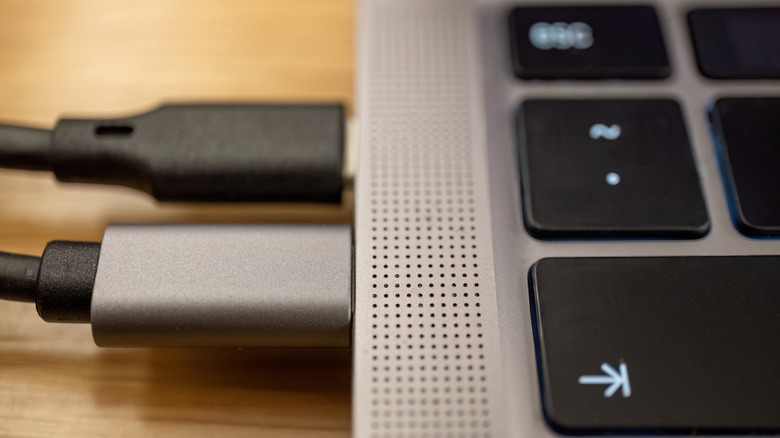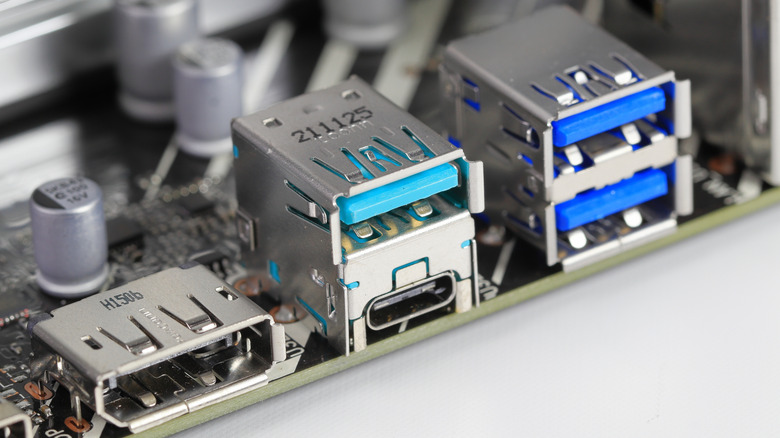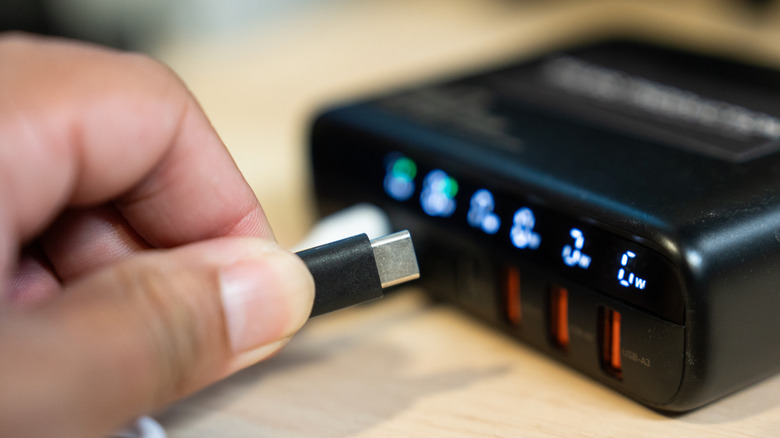USB 3.2 Gen 1 Vs. Gen 2: What's The Difference?
USB, or — Universal Serial Bus to give it its full title — has been around since 1996. The now ubiquitous technology is built into innumerable electronic devices, including smartphones, computers, game consoles, and eBook readers, to name just a few. It wasn't always like this; those of us long enough in the tooth can remember a pre-USB world when connecting a peripheral to a computer was often an object lesson in frustration. Largely, connection problems were down to a lack of industry standards and the limited number of ports available on the machinery of the era. These problems were exactly what the introduction of USB 1.0 was intended to solve.
Jump forward a few decades, and the standard has evolved massively. There are now several generations to consider in the history of USB, and while most people now know what USB is, there is often confusion surrounding the versions. One such point is the difference between USB 3.2 Gen 1 and Gen 2. While both are labelled as USB 3.2, there is one distinct difference between the standards — the speed at which they can transfer data, with Gen 2 effectively doubling the speed of its Gen 1 forerunner.
USB 3.2 - A messy family tree
The story of USB should be simple: USB 2 followed USB 1, and then in 2008, along came USB 3.0. All fairly straightforward so far, but then came USB 3.2 to mess things up a bit. USB 3.2 Gen 1 was originally released as both USB 3.0 and USB 3.1 Gen 1, and has a maximum transfer rate of 5 Gbps. It has three interface options: USB-A, microUSB, and USB-C. For comparison, the Gen 2 version has a maximum transfer speed of 10 Gbps and comes with the same trio of interface options. It's this double transfer speed of Gen 2 that is the primary difference between the standards.
And if you're still following, then brace yourself, there's more to come. In total, there are four variants of the USB 3.2 standard. The others are USB 3.2 Gen 1x2 and USB 3.2 Gen 2x2. Both these variations use the USB-C interface only and offer transfer speeds of 10 Gbps and 20 Gbps, respectively. The organization we can thank for keeping this all so clear is the USB Implementers Forum (USB-IF), which is the body responsible for maintaining the USB specification and compliance.
What's in a name - the USB 3.2 story
When the USB-IF originally envisaged the USB 3.2 standard, it wanted to use a naming convention that strayed from numbers and generations. The original plan was to call the standards with more meaningful names. In this scenario, they wanted to name the USB 3.1 Gen 1 (aka USB 3.2 Gen 1) as SuperSpeed USB, with USB 3.1 Gen 2 (USB 3.2 Gen 2) called SuperSpeed USB+. Whether this would have made things any clearer is a matter of conjecture, as the naming convention never gained any traction with manufacturers. Other suggested names included SuperSpeed USB 10 Gbps for USB 3.2 Gen 2 and SuperSpeed USB 20 Gbps for USB 3.2 Gen 2x2.
The good news is that the era of USB 3.2 is over as we move into the heady realms of USB 4. Introduced in 2019, the standard is restricted to the smaller, more capable USB-C interface and is based on Intel's Thunderbolt technology. With speeds of up to 40 Gbps, this standard again managed the impressive feat of doubling data transfer rates. So far, the USB-IF seems to be keeping on top of the naming conventions for USB 4, with the latest generation simply called USB 4 Version 2. This iteration of the standard brought another doubling of transfer rates to 80 Gbps — another impressive achievement, but let's just hope the naming committee doesn't get nostalgic and try to call it "SuperSpeed USB++ Ultra Max Pro USB4."


